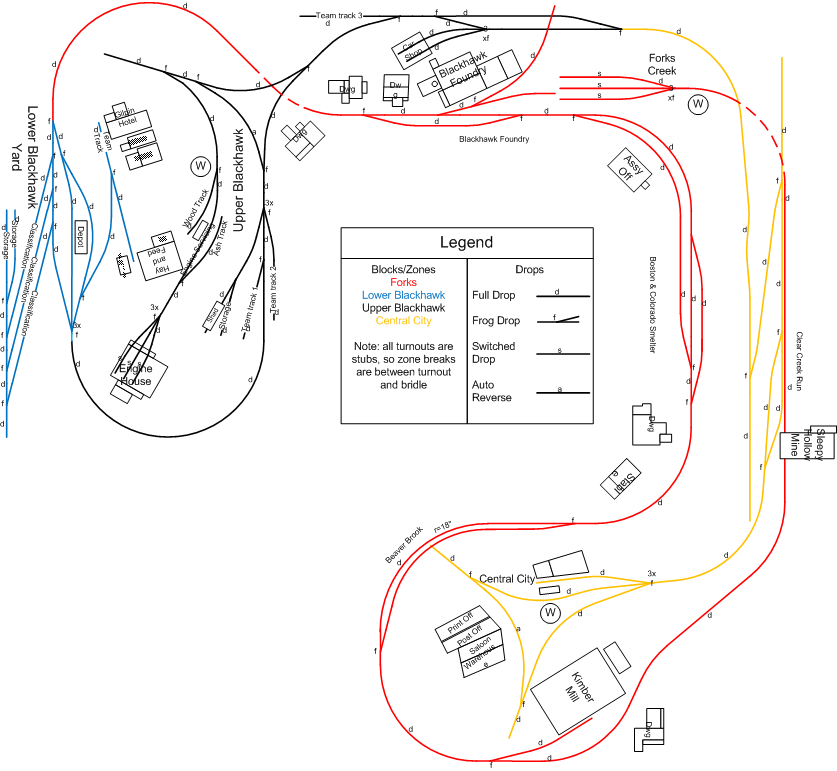Wiring Standards
For trackage wiring the "“northbound" rail is defined as the right hand rail for engines proceeding upstream from Forks Creek Staging to Blackhawk to Central City. The "southbound" rail is the right hand rail for engines proceeding downstream from Central City to Forks Creek. In the switchbacks (because the engine is backing up), rails maintain the designation of the rails they are attached to (i.e. for an engine backing up the slope to Central City, the right hand rail is still the "“northbound"” rail. For record keeping purposes, I used small pieces of properly colored electrical tape to mark the PCBs where each drop will be placed.
Bus wires are 14 gauge stranded wire - white wire is used for the southbound rail and red wire is used for the northbound rail. Bus wires under the layout are grouped into a red and white pair via colored electrical tape to identify each of the four zones the layout is divided into.

Feeder wires are made from 18 gauge solid core wire. Direct Feeders use the same color as the bus wire they are connecting to: white to white and red to red. Frogs are powered with green feeders that run into the controlling electrical switch. Finally feeders from cut out switches or the auto-reversers use different colors (white maps to blue and red maps to brown). Each piece of track has one or more feeder “drops” to ensure that there are no dead spots - this is necessary because the stub switches result in multiple pieces of rail. The following diagram shows these mappings graphically:
